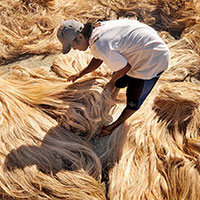• Seat specifications: A seat should take the weight off your feet in order to lessen stress on your legs. It should provide some postural stability while you work or relax. You should be able to relax your muscles that aren't doing anything. The seat should also fit in with other furniture and equipment and not get in the way of what you are doing. The seat edge should be rounded to minimize pressure under the thigh.
• Seat Height: Should be adjustable by the user so that the feet rest flat on the floor. If the operator is too short to rest their feet on the floor, they should use a footrest.
• Plant feet flat on the floor: This supports the weight of the upper body. When feet aren’t planted, the spine must hold up body weight instead.
• Knees above hips: Adjust your chair’s seat so that your hips are slightly above your knees. This position places the least amount of stress on the ankles, knees, and hips.

Anthropometry
The chair was designed considering the anthropometric data of 4 – 5 years old children.
• The footrest should be at a height where a 5th percentile and a 95th percentile kid can keep their feet without any difficulty. The population's height at the 5th and 95th percentiles should be considered for this. The footrest should have a bent backward inclination because the heels of the feet are slightly raised. So, the footrest should support the heels as well, while keeping the legs on the footrest. [Popliteal height (5th) - 21.2 cm, Popliteal height (95th) - 27.6 cm ]
• Because a 5th percentile child can easily sit in a larger seat, but a tall person cannot sit in a small seat, the hip breadth of the 95th percentile should be considered for seat width. [hip width (95th) - 22.8 cm]
• The seat length should be more than the 5th percentile of buttock-popliteal length because a very short seat length will hurt a tall person’s thighs. However, a person can sit on his buttocks to the mid of his thighs without any problem.
[But-pop length (95th) - 31.5 cm, But-pop length (5th) - 23.0 cm seat ln - (50% of 5th) - 11.5 cm
(50% of 95th) - 15.75 cm ]



